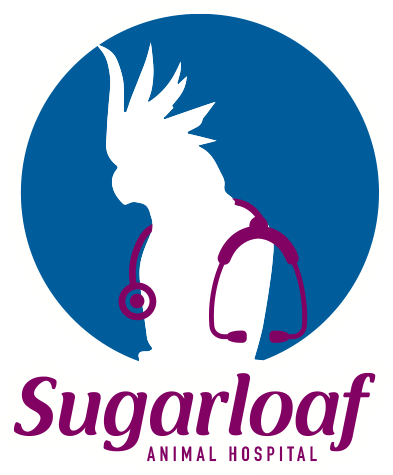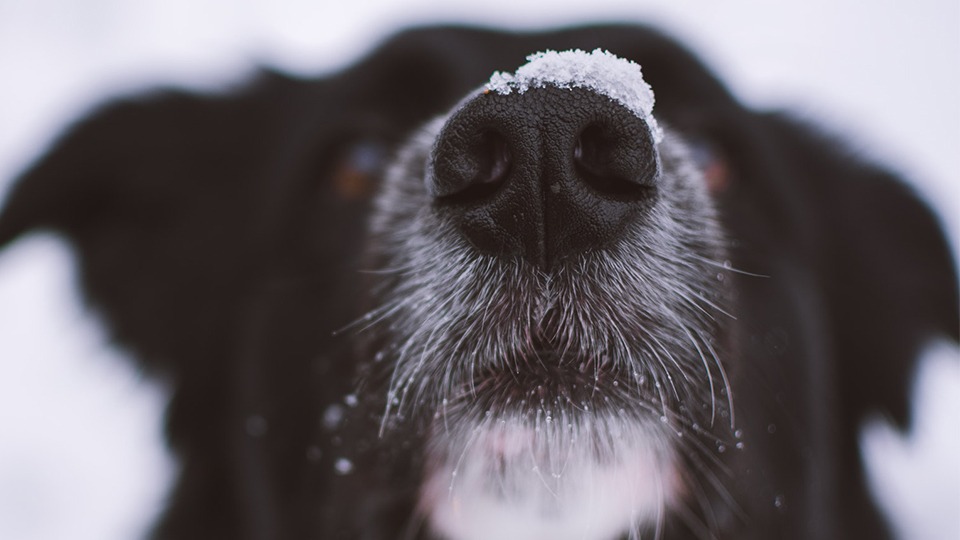We are lucky to see many older animals at the Sugarloaf Animal Hospital. Many of them we have literally known since they were just babies, freshly arrived to their new home and family. They may have even attended our famous Puppy Preschool! But like all living things, Time catches up with our pet, and at a rate quite different to catching up with us! However age itself is not a disease. We care for our pets much better and they live much longer and healthier lives, but they have more time to suffer the ravages of time, and the diseases of old age. We CAN do many things to control this however!
So when do pets become “old”? At what age do we consider them “old”? Firstly it must be said that the old rule-of-thumb: that one year in the life of a human was equivalent to seven “dog years” is a myth! The truth of ageing in our pets is much more complex and difficult to generalise about! Truth be told, the equivalent age is different for different body sizes and breeds. Most of our pets go through a speedy growing up, and are the equivalent of young adults very quickly – in a year for dogs, and only 6 months for birds like budgerigars. I like to think that most companion animals are senior once they are their the equivalent of 50 human years old – for cats this and dogs less than 10kg in lean body weight is about the time of their 8th birthday. For most dogs that weigh between 30-60kg it is between their 5th and 6th birthday.
In the case of ferrets we think they are senior when they are 4 years old, and in their years after that they are prone to many diseases of old age which seem to happen concurrently ? Rats are intelligent and interactive pets that unfortunately reach their senior years after only 24-30 months – we end up loving them like longer lived companion animals but they hurt our hearts so much more frequently!

Ferrrets often get adrenal disease as they age.
While our companion birds, like budgerigars, have evolved to mature very quickly, and in their harsh desert environment they would be unlikely to live more than 6 or so years, domestication and quality care in captivity mean that some of our budgerigar friends will live into their third decade!!! Now THAT is an extended geriatric phase of life!!!
The timing of the changes in legislation for the keeping of reptiles means that many captive herps are now reaching their senior years. Our veterinarians are seeing many snakes and lizards that now have degenerative changes or even cancers.

Inland Bearded Dragon with multiple cancers.
So while it is easy to note those external signs of ageing, such as grey hairs on the muzzle, it is the things that are happening internally that are much more likely to have an impact on our pets quality of life. These organ systems which are also ageing, and these pets are more likely to develop diseases of the heart, kidney or liver. For pets who reach the equivalent of 50 human years, cancer will be the cause of death for about half.
While there are specific diseases that are more common in older pets, the natural process of ageing and degeneration mean that pets can be disease-free, but still have compromised quality of life. Some pets lose some of their vision or hearing and so they might not respond as well to voice commands, or their general level of anxiety may begin to rise. We know from vast experience that pets with poor sight or even complete blindness will cope well in familiar surroundings, but we can help them thrive if we manage other effects of their vision shortfalls. And while we might not be able to cure their problem, we can alter their decline and the effects it has on the rest of their life.
Probably THE most common problem we manage in ageing pets is Degenerative Joint Disease (DJD) leading to osteoarthritis (OA). The earliest signs may be a pet that just begins to avoid active play. And there can be many medical reasons for lethargy, DJD and OA are very, very common in senior pets. There is a lot we can do to help treat or manage these pets, where we change the entire course of the disease. Diets, nutritional supplements, anti-inflammatory agents and joint fluid modifying agents can all play a role in making the life of a pet with OA much more liveable!
In the specific case of arthritis, or more generally our senior pets will do better with some gentle exercise. Many of our treatments are designed to facilitate ongoing exercise given that it plays such an important role in our pets quality of life. Exercise is a critical factor in controlling excess body weight – animals don’t have to be morbidly obese for there to be health consequences of excess body weight. And there is NOT a linear relationship between body weight and health issues: a little extra body weight can have profound effects on joints and other parts of the body.
It is very important to understand that senior animals need more frequent assessment as the diseases and conditions we hope to work with are easiest, least expensive and least invasive to treat early. There is value in additional screening tests, such as blood pressure testing, urinalysis, complete blood count and biochemistry, thyroid hormone assay. These tests may well give results that reveal additional problems and help to ensure that any treatments that might be contemplated have minimal chance of causing problem.

Genghis is 18 years old and has deep knowing eyes!
It is worth mentioning that this is one of the many reasons that starting pet insurance early in life is a good thing. Many diseases and conditions of old age are excluded in policies that are started when an animal is already approaching those years.
People often ask me if companion animals get “doggy Alzheimer’s” and the answer is they can develop Senile Cognitive Dysfunction, where they are easily disturbed by loud noises, they may be unusually aggressive, have increased vocalisation unassociated with hearing deficits, confusion/disorientation, toiletting accidents, or altered sleep habits. There are medications that can help in some of these circumstances, and there are important diseases that shared symptoms. So getting a specific diagnosis is particularly important in these cases.
Many of our senior patients will develop dental disease, and this will cause significant pain and discomfort (as anyone who has had a toothache will attest). We pride ourselves on providing outstanding dental care for our senior patients, which prevents the pain of dental disease, as well as preventing the many complications that arise such as cardiac disease, and kidney disease. Pets with healthy teeth live longer and have less pain – it makes the choice easy!!
Of course to appropriately treat dental disease, an senior pet must have a general anaesthetic, and this is a major concern for many owners. While there is always a risk with any anaesthetic, we have come a long way in developing protocols for senior patients, and tailoring them to the needs of individual patients. It is clear that the risk of the disease process is MUCH GREATER than the risk of a general anaesthesia in this day and age.

Noah is kept young at heart by his attentive owner and the company of younger retrievers!
Should we get another pet of the same species as our pets age? The answer to that question depends on many factors including species, personality, and circumstance. Dogs, and some birds are social animals, and they may benefit from additional company and stimulation in the right circumstance. Cats will often be very stressed by a new introduction, and may be best to not have additional company in their senior years. Our typical answer is that it depends, and we are happy to assess each animal’s individual circumstance and advise you accordingly.
It is one of our guiding philosophies at the Sugarloaf Animal Hospital that just because we CAN do something does not always mean we SHOULD do that thing. We all strive to place the isolated illness and potential treatments in the context of the WHOLE PATIENT, and the best course of action will be different for different animals with the same disease. All the veterinarians at SAH work to recomend choices that are going to provide the BEST quality of life for the longest time for any individual patient. We often say that it is the best measure of our veterinary care to provide quality of life to a patient with a disease we are NOT going to cure.





